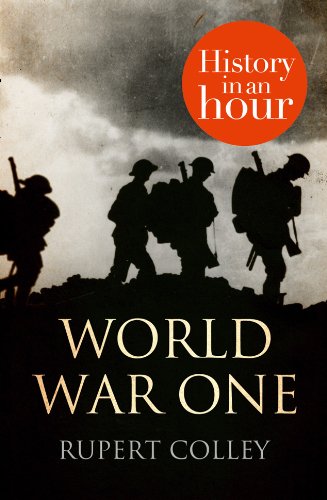The World’s Greatest Civil Aircraft An Illustrated History
The World’s Greatest Civil Aircraft: An Illustrated History is a comprehensive look at the world’s most iconic civil aircraft. From the Wright brothers’ first powered flight in 1903 to the current generation of airliners, this book explores the incredible history of the civil aircraft that has revolutionized how we travel and transport goods. Through stunning illustrations and detailed descriptions, readers are taken on a journey through the evolution of civil aircrafts, from the earliest planes to the sophisticated jets of today. Filled with fascinating facts and insights into the world of aviation, this book is a must-read for any aviation enthusiast.
Pre-WWI Civil Aircraft
Since the beginning of aviation, civilian aircraft have been integral to the success of the aviation industry. Pre-WWI civil aircraft designs were incredibly innovative and paved the way for the modern aircraft we have today. From the Wright Flyer to the Bleriot XI, pre-WWI civil aircraft designs have been integral in the evolution of the aviation industry.
The Wright Flyer, the world’s first powered aircraft, was designed by the Wright brothers and launched the modern era of aviation. The Bleriot XI, designed by Louis Bleriot, was the first aircraft to fly across the English Channel in 1909. A number of other aircraft designs of the time, such as the Farman III, the Santos-Dumont 14-bis, and the Voisin-Farman I, were instrumental in the evolution of civil aircraft design.
The development of the pre-WWI civil aircraft revolutionized the aviation industry. These aircraft designs were incredibly advanced for the time, and were capable of achieving speeds and altitudes that had never been seen before. Thanks to the innovations of the pre-WWI civil aircraft designers, the world of aviation was forever changed.
Post-WWI Civil Aircraft
The dawn of the 20th century saw a rapid increase in the development of civil aircraft. Though a great deal of military aircraft were produced during and after World War I, there was also a surge in the production of aircraft that were intended for civilian use. During this period, manufacturers began to focus on creating aircraft that were more efficient, comfortable, and reliable than their predecessors. Post-WWI civil aircraft were generally smaller than the aircraft of today, but they laid the groundwork for the development of modern commercial aviation.
These aircraft were typically designed with a single engine and open-cockpit designs. Some of the most popular post-WWI civil aircraft included the de Havilland DH.60, the Fokker F.VII, and the Boeing 247. These aircraft were used for transportation, air shows, and other leisure activities. They were also used to transport mail, which allowed for a more efficient and reliable delivery system.
The development of civil aircraft during this period marked a major turning point in the history of aviation. These aircraft were instrumental in paving the way for the incredible advances we have seen in the aviation industry in the last century. They provided the foundation for the incredible airliners and jets that we have today.
Post World War II Civil Aircraft
The world’s aviation industry has come a long way since the end of World War II. In the post-war era, aircraft manufacturers have pushed the boundaries of engineering and design to create some of the most iconic and sophisticated civil aircraft in history. From the first jets to the modern-day passenger planes, the evolution of civil aircraft has been nothing short of remarkable.
In the 1950s, the development of the jet engine revolutionized the aviation industry. Jet aircraft could travel faster and farther than ever before, making long-distance travel much more accessible. The most popular of these jets was the iconic Boeing 707, which was the first long-distance jetliner. The 707 was followed by the larger and more efficient Boeing 747, which was designed to carry more than 400 passengers.
In the decades since, the development of civil aircraft has continued to advance. New technologies have enabled planes to fly faster and farther while consuming less fuel. The Airbus A380, the world’s largest passenger aircraft, is a testament to the progress made in civil aviation technology.
The development of modern civil aircraft has made air travel safer and more efficient than ever before. It has allowed airlines to expand their services to destinations around the world, giving travelers the chance to experience the world in ways they could never have imagined. The post-war era has seen the emergence of a new era of civil aviation, and the world’s greatest civil aircraft have been there every step of the way.

The Jet Age: Civil Aircraft of the 1950s and 1960s
The 1950s and 1960s were a tumultuous period for civil aviation, as the jet engine revolutionized the industry. The first commercial jet airliner, the de Havilland Comet, made its maiden flight in 1952, and quickly ushered in a new era of air travel. As the technology matured, new jetliners such as the Boeing 707, Douglas DC-8, and Airbus A300 began to appear in the skies. These revolutionary aircraft ushered in an era of mass air travel, allowing thousands of passengers to travel around the world in a fraction of the time it would have taken just a few decades prior.
In addition to being faster and more efficient than their propeller-driven predecessors, these new jetliners were also larger and more comfortable, allowing for a more enjoyable travel experience. Airlines began to offer more amenities, such as onboard meals and in-flight entertainment, to attract passengers. These new features, along with the convenience of jet travel, made air travel even more popular.
The success of the jet age ushered in an era of widespread civil aviation, with jetliners becoming a common sight in the skies. As jetliners became more prevalent, they opened up the world to travelers, allowing them to experience new cultures, visit distant lands, and see places they previously could not have imagined. The jet age had an indelible impact on the civil aviation industry, and continues to shape the way we travel today.
Modern Day Civil Aircraft
The modern era of civil aircrafts has ushered in a new era of comfort, convenience, and safety for air travelers. Civil aircrafts have evolved from the earliest models to include sleek, hi-tech machines with improved aerodynamic designs that allow them to reach faster speeds and travel greater distances. The most popular modern-day civil aircrafts include the Boeing 747, Airbus A320, and the Bombardier CRJ series.
These aircrafts have revolutionized the aviation industry, providing passengers with luxurious cabins, in-flight entertainment, and more spacious seating. Additionally, their advanced avionics systems enable them to navigate with greater precision and efficiency, while their cutting-edge engines reduce vibration, noise, and fuel consumption.
Today, civil aircrafts are designed to meet the needs of a diverse range of customers, from commercial airlines to private luxury carriers. With improved safety standards, these aircrafts are capable of safely navigating long distances at high speeds, making them ideal for international travel. They also feature advanced technology that enables them to adapt to changing weather conditions and airspace regulations.
Whether you’re flying a commercial airliner or taking a private luxury flight, the modern civil aircraft has revolutionized the way we travel. From their advanced avionics to their luxurious cabins, these aircrafts provide a safe, comfortable, and efficient journey for air travelers around the world.
The Future of Civil Aircraft
Civil aircraft have revolutionized the way we travel and conduct business around the world. Technological advances in recent decades have made air travel more efficient and affordable than ever before. But what does the future of civil aircraft look like?
The engineering team at Airbus has unveiled the A320neo, a revolutionary new aircraft that boasts a 15% reduction in fuel consumption and an extended flying range of up to 8,000 nautical miles. This aircraft will be able to fly faster and farther than ever before, making it a great choice for airlines looking to reduce their operational costs and improve customer satisfaction.
In addition, the development of electric-powered aircraft is in full swing. Companies like Wright Electric and Eviation are making huge strides towards creating efficient, emission-free aircraft that can fly up to 500 miles on a single charge. As battery technology continues to improve, electric aircraft could become the norm in the near future.
Finally, the development of autonomous aircraft is also making waves in the aviation industry. Autonomous aircraft can fly without a pilot on board, allowing airlines to save money on staffing costs and drastically reduce the potential for human error. Companies such as Boeing and Airbus are already working on autonomous aircraft, and it won’t be long before they are a reality.
The future of civil aircraft is an exciting one, full of potential. With new technologies and advancements being made every day, the sky’s the limit when it comes to the possibilities for the future of air travel.
FAQs About the The World’s Greatest Civil Aircraft An Illustrated History
Q1: What is the scope of The World’s Greatest Civil Aircraft An Illustrated History?
A1: The World’s Greatest Civil Aircraft An Illustrated History is an in-depth exploration of the most iconic civil aircraft from the past 100 years. It covers the history, design, and performance of each aircraft, with informative text and stunning full-color illustrations.
Q2: What type of additional information is included in The World’s Greatest Civil Aircraft An Illustrated History?
A2: The World’s Greatest Civil Aircraft An Illustrated History includes detailed technical specifications, performance data, and production statistics for each aircraft. It also includes a comprehensive appendix with designations, manufacturers, and a timeline of significant events in the history of civil aviation.
Q3: Who is the author of The World’s Greatest Civil Aircraft An Illustrated History?
A3: The World’s Greatest Civil Aircraft An Illustrated History was written by aviation expert David Donald. Donald is a renowned aviation historian and has written numerous books on aircraft and aviation.
Conclusion
The World’s Greatest Civil Aircraft: An Illustrated History provides readers with an insightful and comprehensive look at the history of civil aircraft over the past century. From the Wright Brothers’ first powered flight to the modern aircraft of today, this book covers the stories behind the development and operation of some of the world’s most iconic aircraft. From the earliest biplanes to the latest supersonic jets, readers will gain a greater appreciation and understanding of the incredible advancements in aviation technology and air transport over the years. This book is an essential resource for anyone who wishes to learn more about the history of civil aircraft and the stories behind them.


